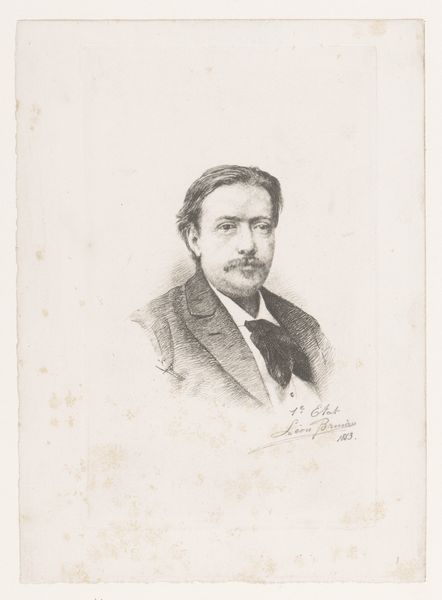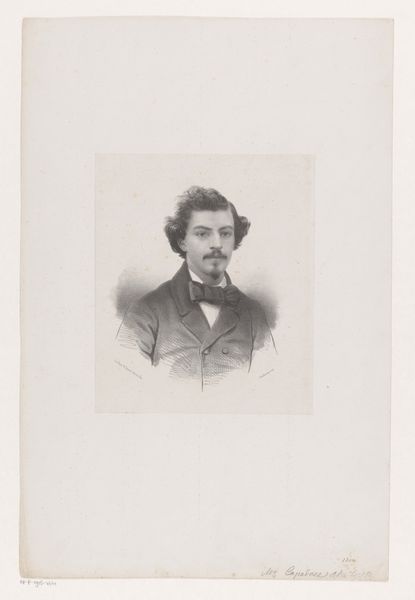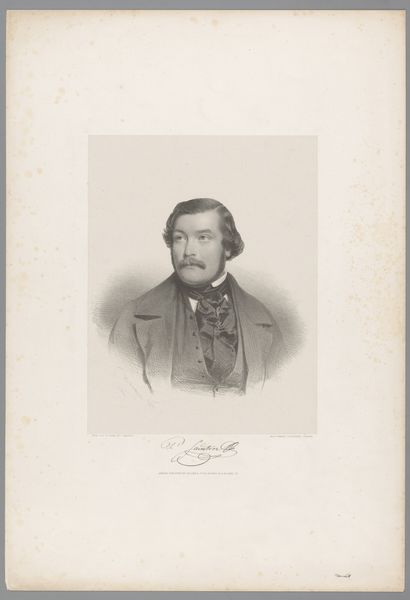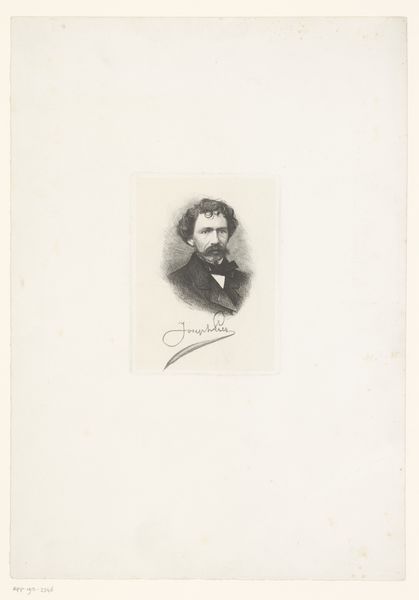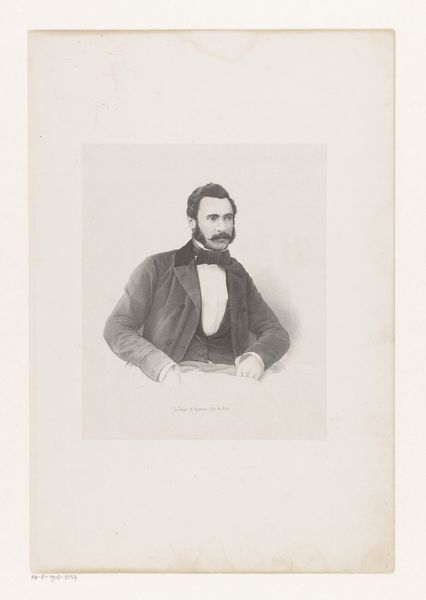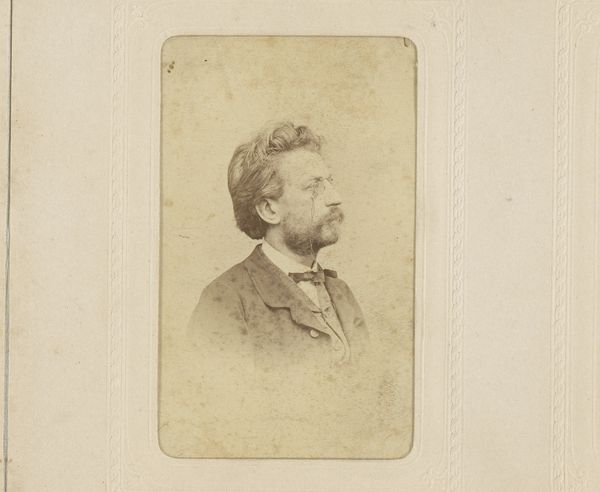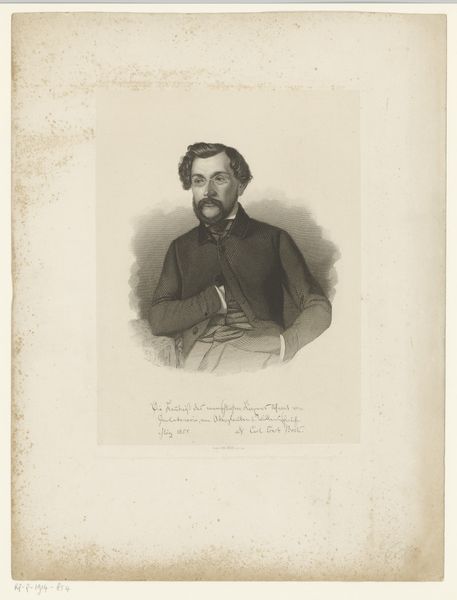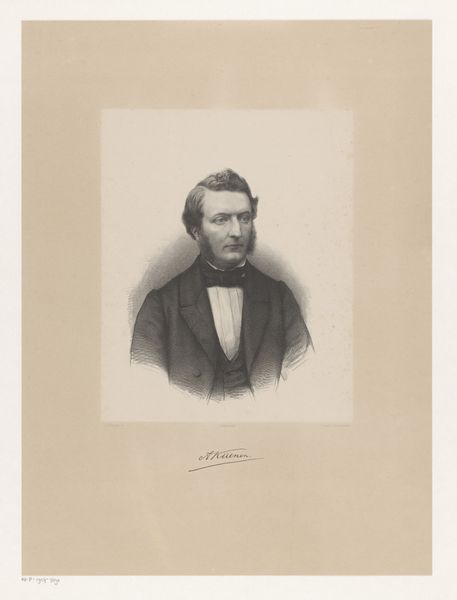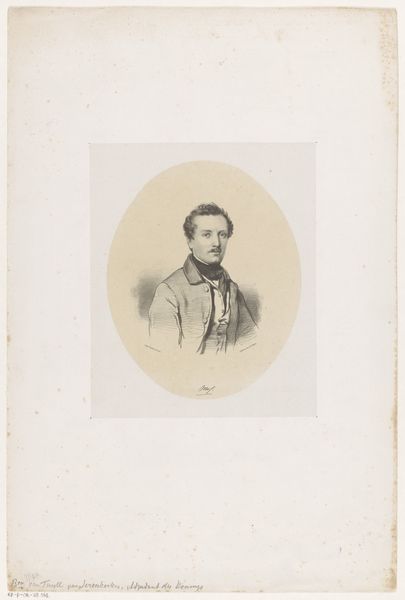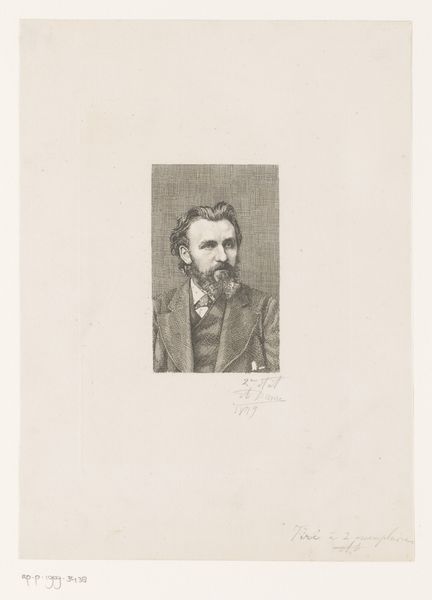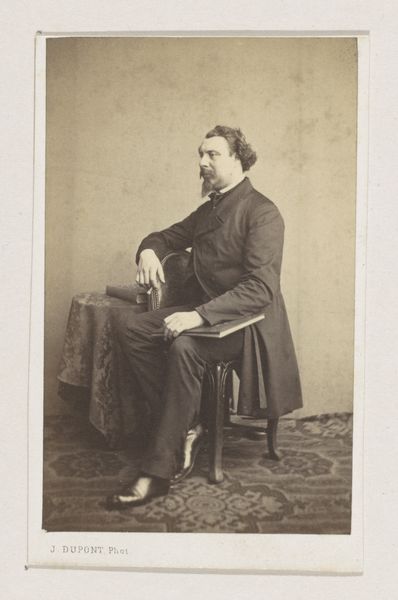
print, engraving
#
portrait
# print
#
old engraving style
#
historical photography
#
romanticism
#
19th century
#
genre-painting
#
engraving
Dimensions: height 150 mm, width 125 mm
Copyright: Rijks Museum: Open Domain
This is a portrait of Joseph Christian von Zedlitz, made by Charles Auguste Schuler in the 19th century, using the printmaking technique of etching. If you look closely, you'll notice that the image is composed of thousands of tiny lines. These weren't drawn directly onto the paper; instead, the artist would have used a sharp needle to draw through a protective coating on a metal plate, exposing the metal underneath. This plate was then immersed in acid, which bit into the exposed lines. The deeper the bite, the darker the line would appear in the final print. The etched plate would then be inked, and the surface wiped clean, leaving ink only in the etched lines. Finally, the image would be transferred to paper under great pressure. It was an indirect, painstaking process, but capable of capturing fine detail. Considering the labor involved, printmaking was an astute choice for portraiture in the 19th century. It allowed for the relatively inexpensive creation of multiple images, feeding a growing market for images of notable figures. So next time you look at a print, consider the social context embedded in its very making.
Comments
No comments
Be the first to comment and join the conversation on the ultimate creative platform.

